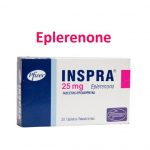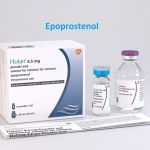
Contents
- 1 Getting Rid of a Pimple on My Nose Fast
Getting Rid of a Pimple on My Nose Fast
To remove a pimple on your nose quickly, using acne cream can help. However, be cautious when applying acne medication to the inside of your nose, as it is sensitive and can react more strongly than your skin.
Acne is a common skin condition that can occur anywhere on your body. There are two types of acne: acne vulgaris and acne rosacea. Due to larger pores and increased oil production, your nose is more prone to acne. Pimples around your nose can be painful and worsen if you pick at them. The best approach to treating a pimple on your nose is to leave it alone.
Nose acne can be caused by either acne vulgaris or acne rosacea. The cause of the pimple on your nose depends on the type of acne you have. Pimples are most common on the nose because its pores are typically larger and more likely to become clogged.
The appearance of the pimple on your nose may vary depending on the type of acne you have. Acne vulgaris is a result of clogged pores due to dead skin, dirt, or bacteria. This type of acne includes whiteheads, blackheads, and pus-filled bumps. Acne rosacea, on the other hand, is a form of rosacea caused by enlarged blood vessels. It results in pimple-like bumps due to inflammation, which differs from traditional acne.
How can you identify a nose pimple?
Nose pimples are easily recognizable. They can appear as whiteheads or blackheads, or they may form under the skin. Regardless of their appearance, they can be painful and worsen when you pick at them.
However, it’s important to note that a pimple on your nose could also be a cold sore or folliculitis. Cold sores resemble pimples but persist in the same spot and scab as they heal. They can be tender and painful but typically resolve within a week. Folliculitis, on the other hand, is an infection originating from the hair follicle. In some cases, the follicle may be infected with staphylococcus (staph) bacteria, resulting in redness and swelling. Although it may resemble acne, picking at it can worsen the infection.
If you have a painful bump on your nose that you cannot identify, consult a dermatologist to determine the cause and appropriate treatment.
Effective Treatments for Nose Pimples
To quickly eliminate a pimple on your nose, applying acne cream can be beneficial. However, be mindful that acne medications may cause more irritation on the sensitive inside of your nose than on your skin.
Medications
Salicylic acid and benzoyl peroxide are effective treatments for traditional acne. Salicylic acid is most suitable for acne vulgaris as it eliminates excess dead skin cells around the hair follicles. Medicated toners, creams, and spot treatments can also aid in bacteria reduction.
Your doctor may prescribe anti-inflammatory medications such as tetracycline, brimonidine, and isotretinoin. These medications, combined with nighttime retinoids, can reduce redness, swelling, and prevent future breakouts.
Home Care
Having a healthy skincare routine and washing your face daily can help prevent pimples. Using a gel-based cleanser can further aid in prevention. Applying ice to your pimple can reduce inflammation and redness, while a warm washcloth can draw out oil and pus from deep within your skin.
Alternative Therapies
For more severe cases, your dermatologist may recommend alternative therapies such as dermabrasion, meditation, laser therapy, or microdermabrasion.
Possible Complications and Side Effects
Picking at a pimple on your nose can cause inflammation and worsen the condition. It can also introduce bacteria into the follicle, leading to infection and scabbing, resulting in scarring on your face.
Medications prescribed to treat pimples may come with potential side effects. If your doctor prescribes antibiotics, you may experience some side effects.
Can Retinol Help with Acne? 9 Effective Acne Treatments
Retinol, a derivative of vitamin A, is a common skincare ingredient that may aid in treating mild to severe acne and improving your skin’s appearance.
Retinol, available in serums, gels, toners, and wipes, is directly applied to cleansed skin. It works by exfoliating the outermost layer of the skin (epidermis), removing dirt, dead skin cells, and oil from the pores. Retinol’s tiny molecules can also penetrate the middle layer of the skin (dermis) and increase collagen and elastin production.
By unclogging blocked pores and enhancing cell turnover, retinol reduces inflammation and helps the skin repair itself.
Are There Side Effects to using Retinol?
Retinols come in various concentrations, so it is crucial to perform a patch test 24-72 hours before applying retinol to a large area of skin. Some people may experience mild itching and burning upon application.
Start with a concentration of 0.5% and gradually increase strength as your skin adjusts. Always use sunscreen while using retinol to protect your skin from increased sensitivity to the sun. Avoid combining retinol with vitamin C serum, salicylic acid, or other exfoliating agents, as it can lead to severe skin irritation. It is not recommended to use retinol serum if you are pregnant or lactating, as it is known to be teratogenic if ingested.
Understanding Acne
Acne is a common skin condition caused by clogged pores due to oil, bacteria, dead skin cells, and other factors. It primarily occurs on the face, forehead, chest, shoulders, and upper back. Acne appears as whiteheads, blackheads, pustules, cysts, and nodules.
Multiple factors contribute to the development of acne, including genetics, hormonal fluctuations, stress, high humidity, oily skin, and certain skincare products. Although it is common among teenagers, acne can affect individuals of any age.
Advanced medications and therapies can help eliminate or reduce the underlying factors that lead to acne formation.
9 Treatment Options for Acne
- Benzoyl peroxide: Available as a leave-on gel or face wash, it primarily targets surface bacteria that contribute to acne. Lower concentrations and milder formulations are less irritating to the skin.
- Salicylic acid: Used as a cleanser or toner to remove the top layer of dead skin cells and prevent hair follicle clogging by dissolving dead skin cells on the skin surface.
- Azelaic acid: Effectively kills microorganisms on the skin and reduces inflammation.
- Oral contraceptives: Reduces acne formation associated with menstrual cycles, hormonal fluctuations, or polycystic ovarian disease.
- Steroids: Treats severe acne and can be directly injected into large nodules to reduce inflammation.
- Lasers (ablative and nonablative): Primarily used to treat acne scars by promoting collagen growth through heat application. Heat stimulates the body’s wound healing response, resulting in new collagen production.
- Chemical peels: Exfoliates the top layer of the skin to reduce the appearance of acne scars. The removal of the top layer allows smoother new skin to grow.
- Photodynamic therapy: Involves using medication and a special light or laser to control oil production and bacteria.
- Dermabrasion: Utilizes a rotating brush to exfoliate the top layers of the skin and treat acne scarring. Microdermabrasion is a milder form of this treatment.
Sources:
- American Academy of Dermatology Association: "Lasers and Lights: How Well Do They Treat Acne?"
- Cleveland Clinic: "Dermabrasion & Microdermabrasion."
- Cleveland Clinic: "A Dermatologist’s Advice on How to Get Rid of a Pimple — Stat!"
- Cochrane: "Treatments for rosacea."
- Intermountain Healthcare: "Should You Pop That Pimple?"
- Kids Health: "Should I Pop My Pimple."
- Kids Health: "Tips for Taking Care of Your Skin."
- Mayo Clinic: "Folliculitis."
- Mindful: "Meditation: good for the brain, good for the skin too."
- Peace Health: "Acne: Treatment with Salicylic Acid."
- Stanford Medicine: "Differentiating Acne Vulgaris vs. Acne Rosacea."
- University of Wisconsin Madison Health: "Dr. Jacqueline Gerhart: What’s This Red Thing On My Lip?"
- WebMD: "How to Get Rid of Blackheads."
- Cleveland Clinic: "When Should Men See a Dermatologist for Adult Acne?"
- Medscape: "Is Acne Vulgaris More Common in Men or Women?"
- American Academy of Dermatology: "Skin Care Tips for Men."


